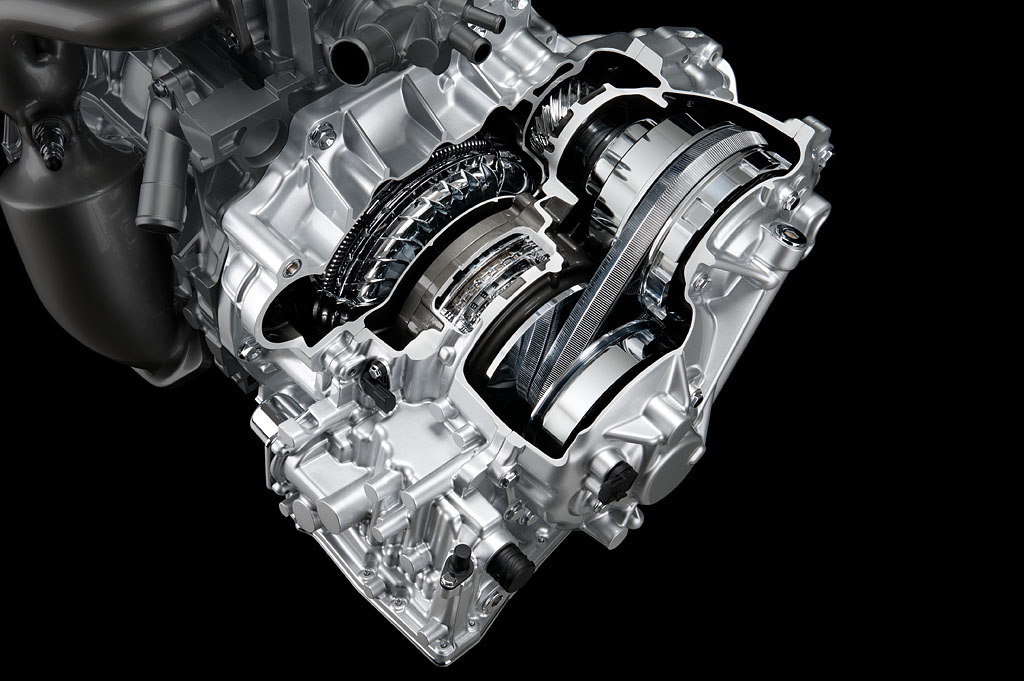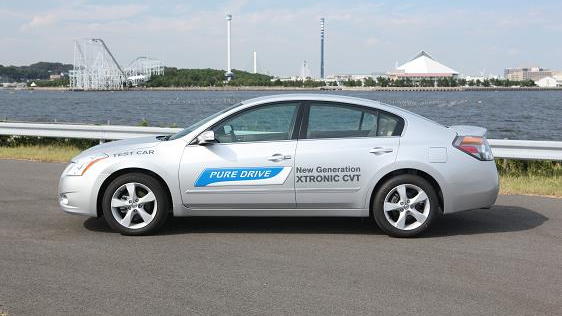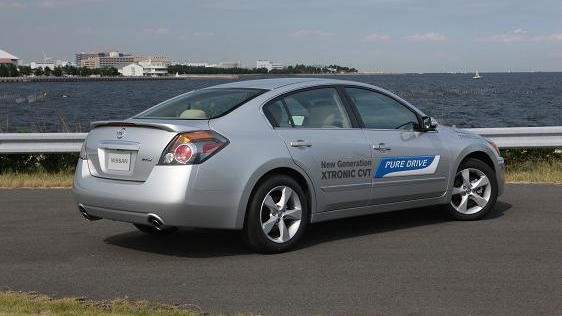One of the best ways to improve fuel economy is to keep a car's engine operating at its most efficient speed, regardless of how fast the vehicle is traveling.
That's the principle behind continuously variable transmissions, or CVTs, which use belts and variable pulleys to match road speed to an engine's most economical operating range.
Nissan has long been a CVT proponent, with more of them on the road than any other automaker. Now, the company has completely redesigned its line of CVTs, producing improvements in gas mileage that the company says could be as high as 10 percent.
Smaller and larger CVTS
One new CVT is just reaching the U.S. now, in the new 2012 Nissan Versa subcompact sedan. That's the one for smaller engines, those under 2.0 liters.
But another redesigned CVT, for engines of 2.0 to 3.5 liters, will see much higher volumes in next year's all-new, redesigned 2013 Nissan Altima mid-size sedan.
Nissan says the new design has 40 percent less friction than the CVT it replaces, and the span between its lowest and highest ratios is 7:1, the highest in the field.

Xtronic CVT, 6th generation - for 2013 Nissan Altima
(The new smaller CVT has even more impressive technology, with a yet-higher ratio span of 7.3:1, due to a new ‘subtransmission’—essentially an additional pulley to provide more flexibility, as the crank ratios on a classic ten-speed bicycle do.)
2013 Altima to face redesigned foes
The current Altima, which has sold quite well this year despite its age, competes with the Honda Accord, Toyota Camry, Hyundai Sonata, Ford Fusion, and Chevrolet Malibu.
With a new 2012 Camry at dealers now, plus 2013 redesigns coming for the Accord, Fusion, and Malibu, mid-size sedans promise to be a very competitive segment next year.
In Japan this week for the Tokyo Motor Show, our Bengt Halvorson has actually driven the new CVT, mated to the existing car's 270-horsepower, 3.5-liter V-6. The test vehicle was a previous generation Altima "mule" fitted with the new transmission and current engine in the old body style.
He notes that Nissan worked hard to eliminate the non-linear responses that plague some CVTs, by letting the transmission momentarily lock its ratio on moderate acceleration. This lets the driver feel the full torque from the V-6, and provides "more reassuring, confident power delivery."

2011 Nissan Altima sedan
If the driver floors it, though, the sounds of the high-revving engine rises quickly and shrilly to get it to its most powerful range: 5000 rpm or higher.
Combined EPA rating: 30 mpg?
While Nissan didn't specify expected EPA gas mileage ratings for the 2013 Nissan Altima, the company said the new transmission could improve fuel efficiency by as much as 10 percent.
That could give a base model 2013 Altima sedan, using the new CVT paired to a 2.5-liter four-cylinder engine, a combined rating as high as 30 miles per gallon.
Altima Hybrid coming too?
There is also likely to be a hybrid model of the new Altima as well, replacing the 2008-2011 Altima Hybrid, rated at a combined 33 mpg. The new Altima Hybrid will likely be the gas-mileage leader of the range, just as Ford's Fusion Hybrid and Toyota's Camry Hybrid are for those mid-size sedan lines.
The new Nissan Altima Hybrid will use Nissan's own internally developed single-motor hybrid system, unlike the old one, which used Toyota's Hybrid Synergy Drive twin-motor-generator system paired to a Nissan four-cylinder engine.
+++++++++++
















